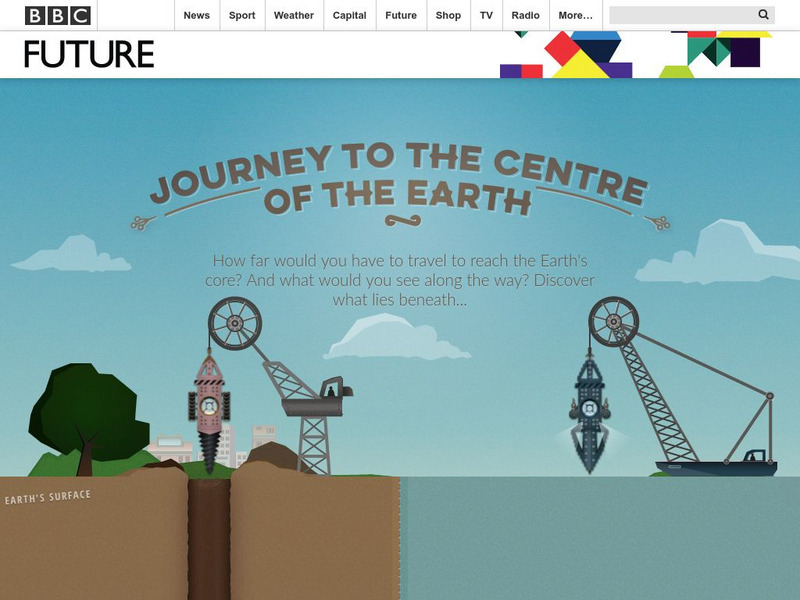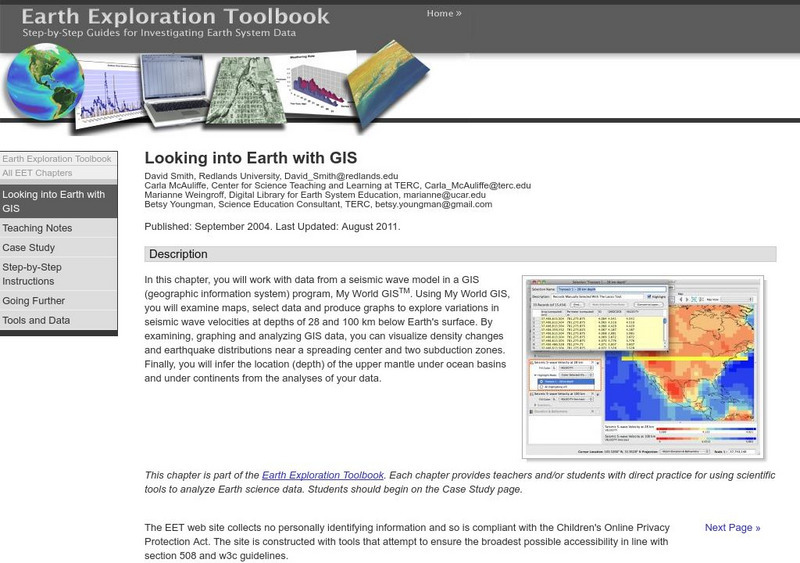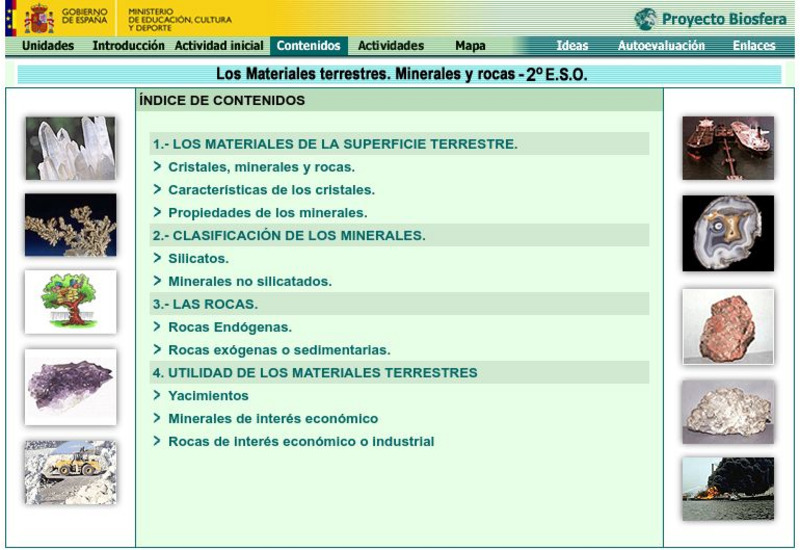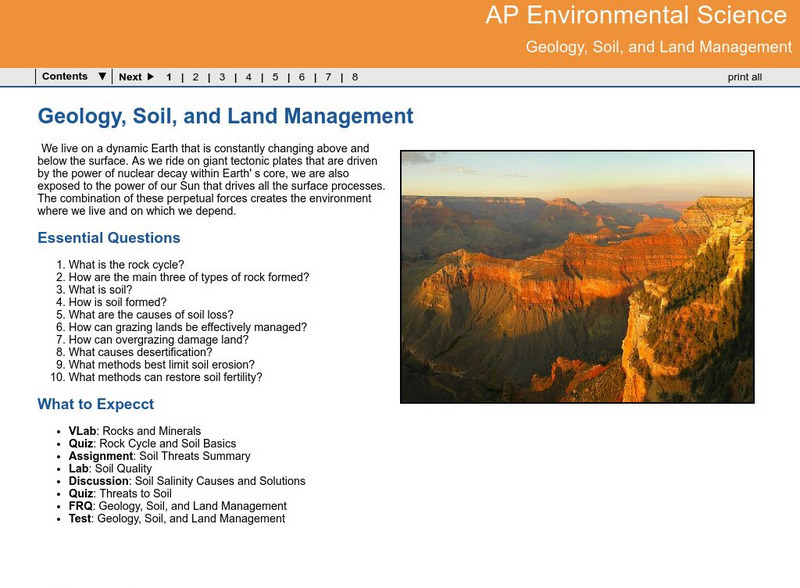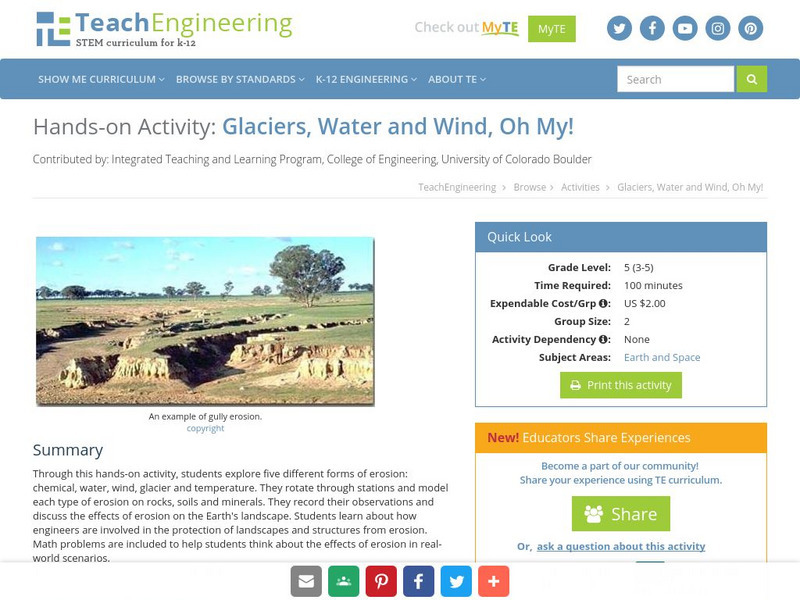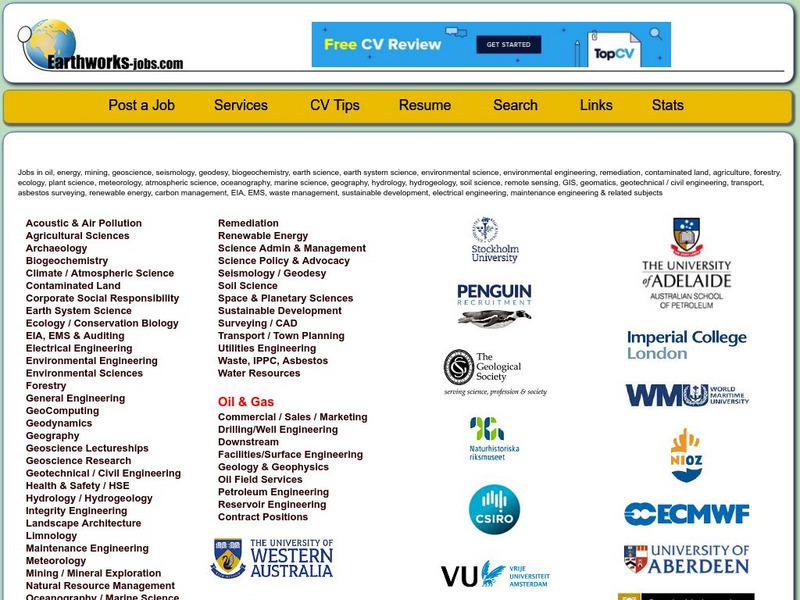PBS
Pbs Learning Media: Earth's Systems: The Water Planet
Observe different forms of water and how it covers about 75 percent of Earth's surface in this media gallery captured by NASA and the U.S. Geological Survey (USGS). Use the satellite and ground images in this resource to enhance student...
BBC
Bbc Future: Journey to the Centre of the Earth
Explore deep underground and deep in the ocean to discover what lies beneath the surface. Don't stop until the final destination: the core of the Earth.
Science Education Resource Center at Carleton College
Serc: Looking Into Earth With Gis
Multi-activity activity where students will work with data from a seismic wave model in a GIS (geographic information system) program. They will examine maps, select data, and produce graphs to explore variations in seismic wave...
Other
Chicago Science Group: Earth's Changing Surface Virtual Field Trip
Join Science Companion author Belinda Basca and her family as they explore the land forms in Hawaii from a helicopter! Includes suggestions for teacher lessons, student activities, and web resources.
Science Education Resource Center at Carleton College
Serc: Analyzing Plate Motion Using Earth Scope Gps Data
In this chapter, you will access Global Positioning System (GPS) data from the Plate Boundary Observatory (PBO) and analyze the data in a spreadsheet to measure the motion of GPS stations in the Pacific Northwest. From your analyses, you...
PBS
Pbs Learning Media: Why Do We Have Seasons?
Explore what causes seasons on Earth in this interactive adapted from NASA materials that features four cities at different latitudes. Use this resource to view how Earth's axial tilt causes seasons from different perspectives and to...
American Geosciences Institute
American Geosciences Institute: Earth Science Week: Critical Zone
Explore the critical zone of Earth's surface in this lesson plan.
Science Education Resource Center at Carleton College
Serc: Using Nasa Neo and Image to Explore Role of Snow Cover in Shaping Climate
This lesson helps young scholars investigate satellite images displaying land surface temperature, snow cover, and reflected shortwave radiation data.
Other
Ordnance Survey: Mapzone: Geography
Take a look outside, at the landscape. Explore the world, the features of the earth, the impact of weather on the earth through this resource. Discover weather, climate, glaciation, rivers, and urban development.
National Geographic
National Geographic: Conflict on the Danube
Lesson in which students use maps and text to explore physical and cultural boundaries and the disputes over control of them. Includes two activities with comprehensive and adaptable materials.
Council for Economic Education
Econ Ed Link: Where Did You Come From?
This site is an excellent lesson in which students explore the economic interdependence shared between the United States and Chile. Students will learn about the products imported from Chile and determine the reasons for trade between...
Incorporated Research Institutions for Seismology
Iris: Station Monitor
Students can type in their zip code to find and explore the nearest live earthquake station data.
US Geological Survey
Usgs: The Water Cycle
Learn about the movement of water from Earth's surface to the atmosphere with this site. Site describes the water cycle in words and with a diagram. Also explored on the page is the distribution of Earth's global water supply.
National Institute of Educational Technologies and Teacher Training (Spain)
Ministerio De Educacion: Los Materiales Terreste. Minerales Y Rocas
Explore the world of rocks and minerals and the usefulness of these earth materials.
NPR: National Public Radio
Npr: New Observatory Brings Stars Closer to Earth
A radio story describing the development of the newest technology in telescopes based on an old idea. Images of the 80-acre interferometer are shown on the site.
Utah STEM Foundation
Utah Stem Action Center: Air Masses
An air mass forms when the air over a large region of Earth sits in one place for many days. The air gradually takes on the characteristics of the land or water below it. Where Earth's surface is cold, the air becomes cold. Where Earth's...
Georgia Department of Education
Ga Virtual Learning: Ap Environmental Science: Geology, Soil and Land Management
Students explore how Earth processes shape the land, and how important managing the land can be in response to these natural activities.
TeachEngineering
Teach Engineering: Glaciers, Water and Wind, Oh My!
This hands-on activity explores five different forms of erosion (chemical, water, wind, glacier and temperature). Students rotate through stations and model each type of erosion on rocks, soils and minerals. The students record their...
Science Museum of Minnesota
Science Museum of Minnesota: Thinking Fountain: Habitat
Explore the basics of a few habitats and then create an ecocolumn--a simulated cross-section of a biome such as a rain forest--with your own environment.
TeachEngineering
Teach Engineering: Get Me Off This Planet
The purpose of this lesson is to teach students about how a spacecraft gets from the surface of the Earth to Mars. The lesson first investigates rockets and how they are able to get us into space. Finally, the nature of an orbit is...
TeachEngineering
Teach Engineering: Moon Walk
Students learn about the Earth's only natural satellite, the Moon. They discuss the Moon's surface features and human exploration. They also learn about how engineers develop technologies to study and explore the Moon, which also helps...
Exploratorium
Exploratorium: Global Climate Change: Atmosphere
Use this site to explore real scientific data relating to the atmosphere. With this information you can gather evidence, test theories, and come to conclusions. Click on the data examples to view a full scale version.
Exploratorium
Exploratorium: Global Climate Change: Hydrosphere
Use this site to explore real scientific data relating to the hydrosphere. With this information you can gather evidence, test theories, and come to conclusions. Click on the data examples to view a full scale version.
Other
Earthworks: Jobs
Are you interested in an environmental career? Explore current environmental job opportunties in the Earthworks database.

